Brunisolic Order
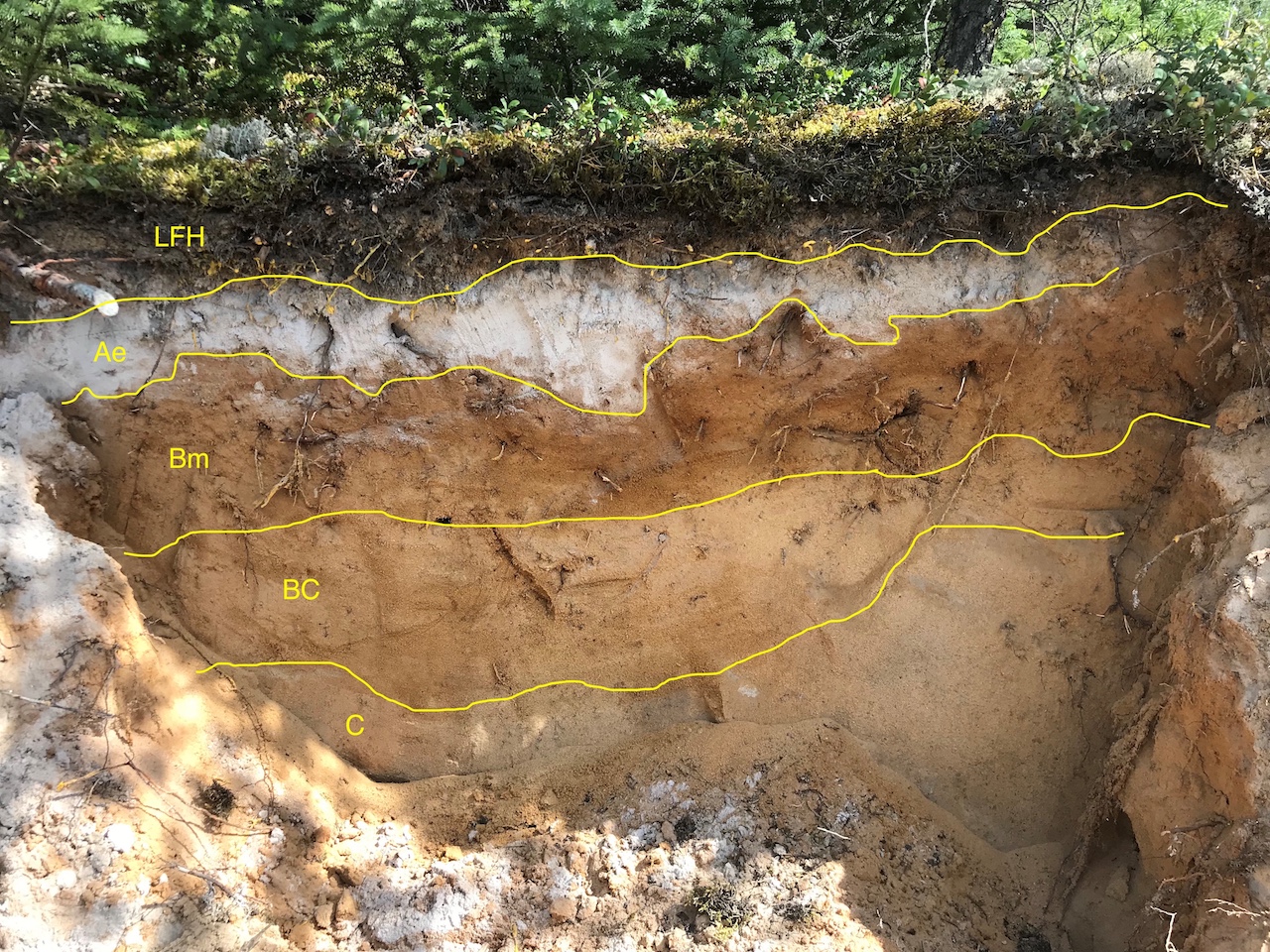 This is a typical example of a Brunisolic soil formed in sandy parent materials. The uppermost mineral horizon has undergone bleaching from organic acids (creating an Ae horizon) and the B horizon has reddish iron films coating sand grains (a Bm horizon). The BC shows both reddish and light colours, and the unaltered C horizons is light-coloured sand.
This is a typical example of a Brunisolic soil formed in sandy parent materials. The uppermost mineral horizon has undergone bleaching from organic acids (creating an Ae horizon) and the B horizon has reddish iron films coating sand grains (a Bm horizon). The BC shows both reddish and light colours, and the unaltered C horizons is light-coloured sand.Contributor: Ken Van Rees
Location Saskatchewan
Dystric Brunisol
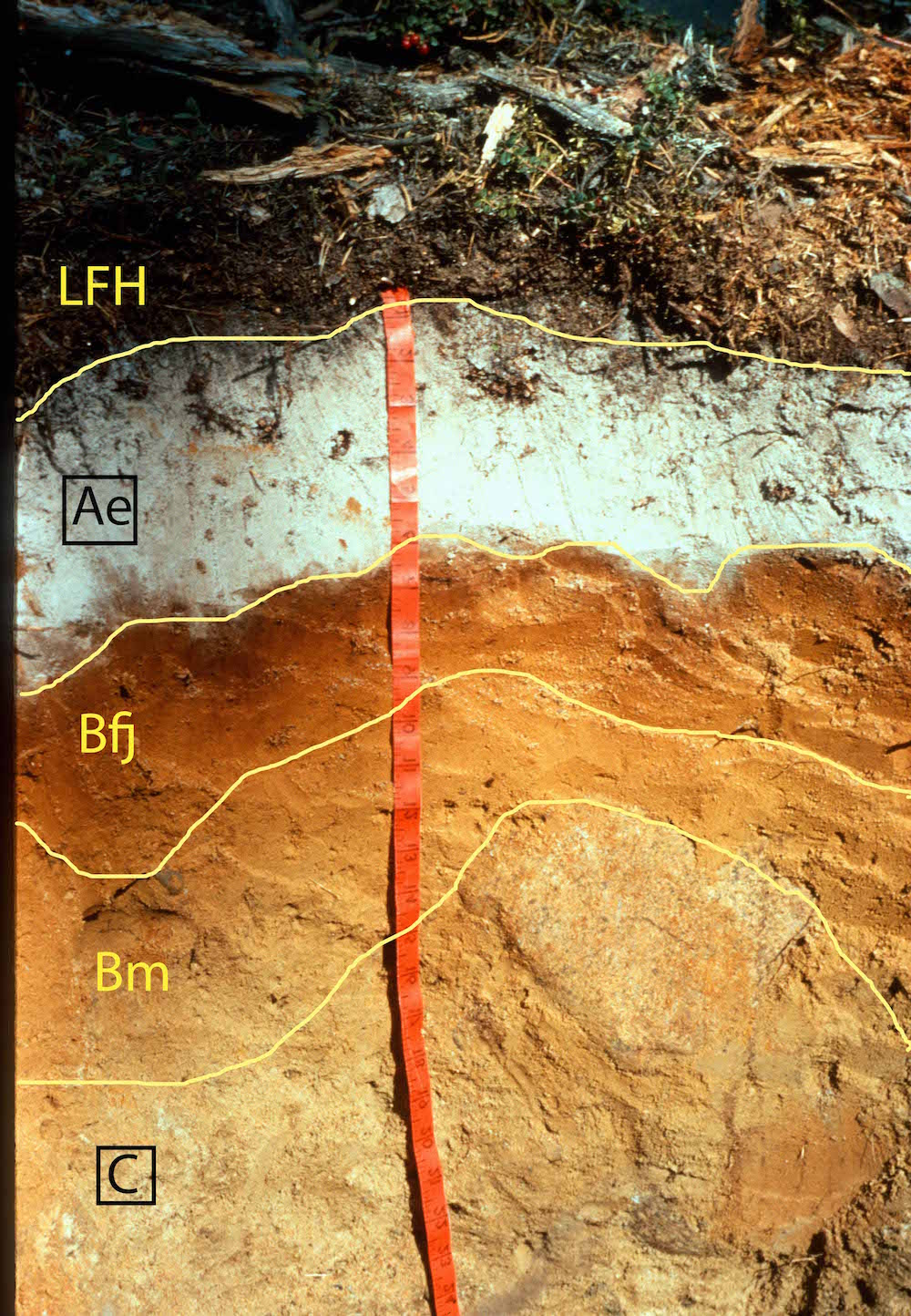
Dystric Brunisols form in acidic parent materials and lack an organic-rich surface mineral horizons (i.e., no Ah). This soil has a sharp contrast between the LFH and Ae and between the Ae and Bm horizons. The upper B horizon is labeled as a Bfj – the f suffix indicates that deposition of iron has occurred and the j suffix indicates that the amount of iron is insufficient to meet the criterion for Podzolic soils (think of it as a juvenile horizon).
Contributor: Ken Van Rees
Location: Saskatchewan
Eutric Brunisol
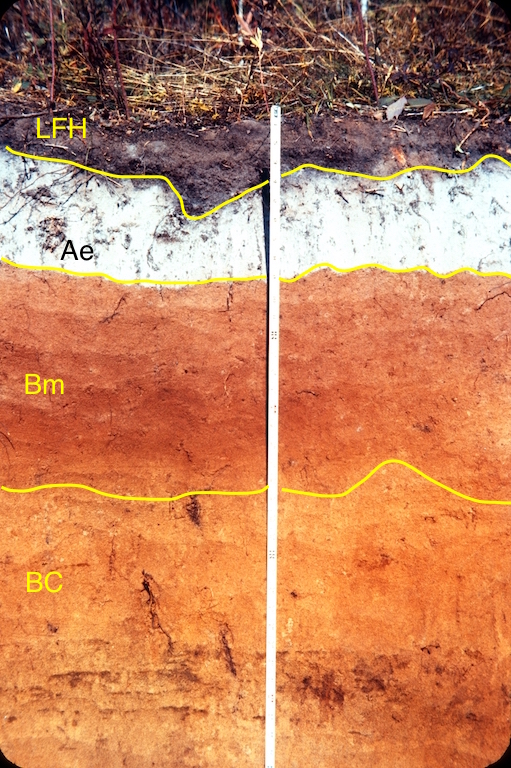
Eutric Brunisols form in parent materials derived from sedimentary rocks and lack an Ah horizon. This soil has a very strongly expressed Ae horizon overlying a reddish Bm horizon. The boundary between the two horizons is almost level and the transition occurs over a few centimeters at most. There is also a sharp boundary between the leaf litter layer (LFH) and the Ae horizon. Sharp boundaries like this indicate almost no mixing of soil by organisms has occurred and may indicate a change in texture of the parent material of the soil. The boundary between the Bm and transitional BC horizon is more gradual.
Contributor: Glen Padbury, AAFC
Location: Saskatchewan
Melanic Brunisol
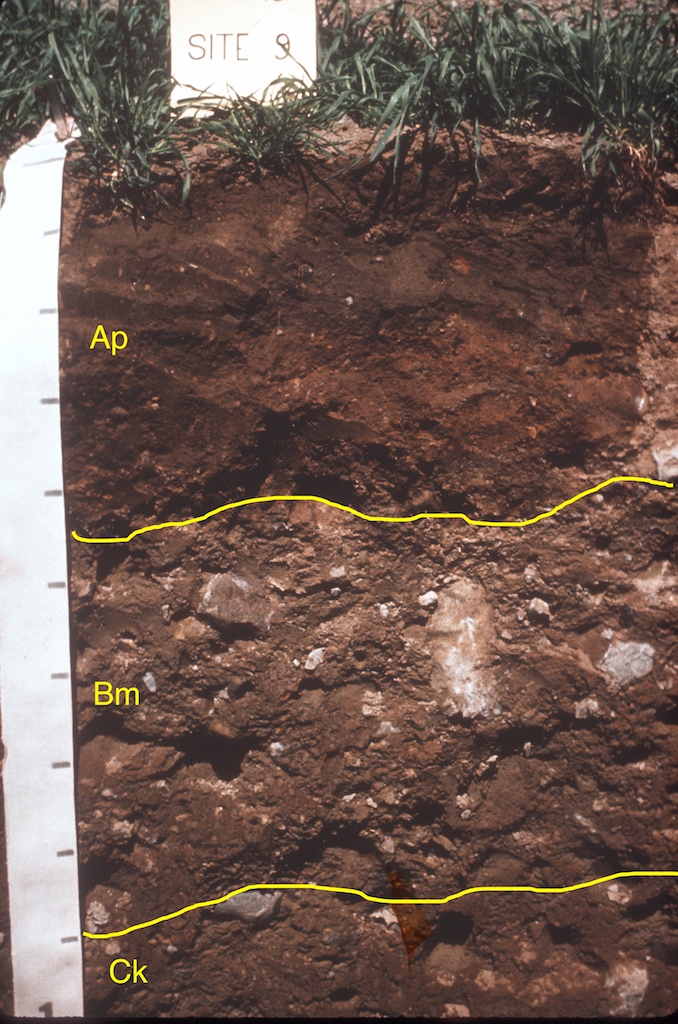
Melanic Brunisols form in parent materials derived from sedimentary rocks and have a organically enriched surface mineral horizon. The surface horizon of this soil is labeled as an Ap, indicating it has been ploughed. The mixing of surface organic matter by ploughing and by earthworms has created the Ap horizon. The depth of the Ap is 25 cm, corresponding to the depth of ploughing. The brown Bm horizon overlies a Ck with over 20% calcium carbonate equivalent. The soil is formed in till parent material as is evident from the gravel scattered throughout the Bm and Ck. The combined influence of frost heave and ploughing (which brings rocks to the surface ) has greatly reduced the gravel content of the Ap.
Contributor: Federal and Provincial Soil Survey staff
Profile and analytical data: P. 152 of Eastern Canada field trip report, IUSS 1978
Location: Central Experimental Farm, Ottawa (Grenville loam)
Sombric Brunisol
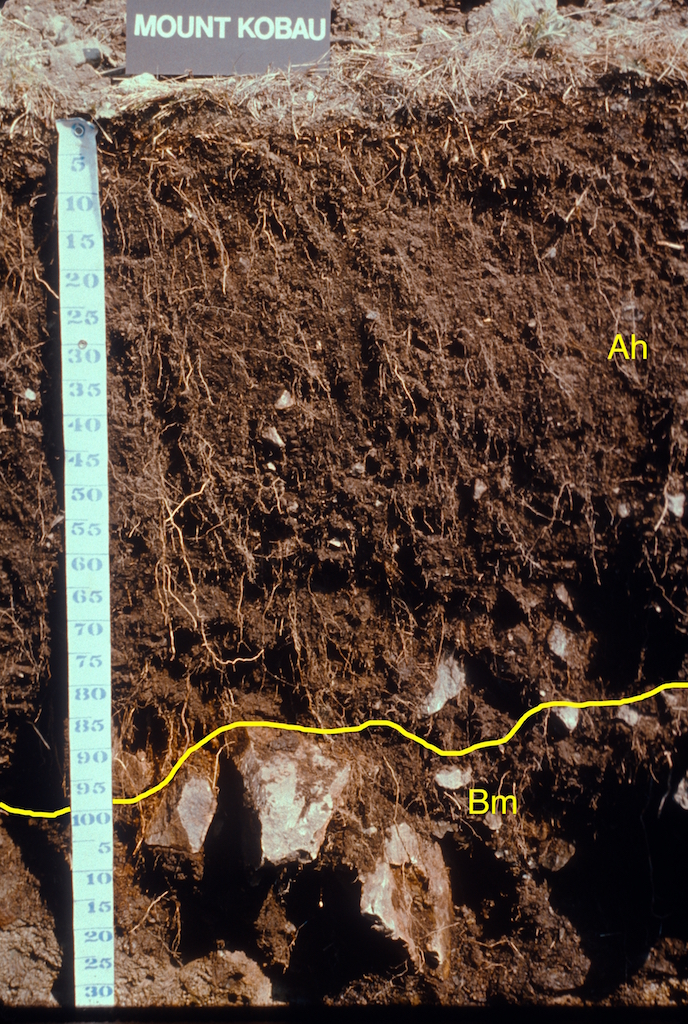
Sombric Brunisols form in acidic parent materials and have an organically enriched surface horizon. This soil has a very thick Ah horizon (actually two Ah horizons, one from 0-7 cm and the second 7-100 cm) overlying a very stony Bm horizon. The thick Ah forms from movement of material down slope by gravity and water erosion and from the burrowing activity of small mammals, which are very common in high alpine landscapes. The vegetation in these environments often has thick root mats to hold the plant in place in these harsh environments.
Contributor: H.A. Luttmerding and J.H. Day
Profile and analytical data: pp. 179-183 of Cordilleran field trip report, IUSS 1978
Location: Mount Kobau, B.C.
